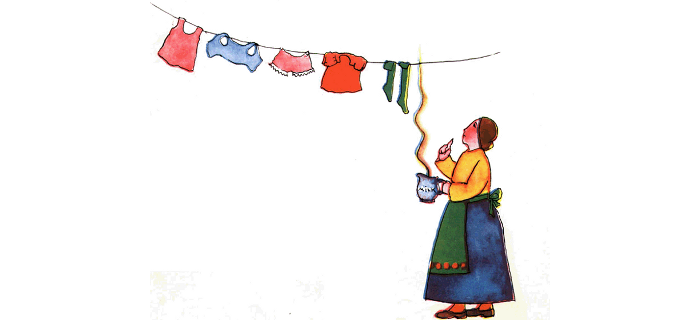Beyond the Piggy Bank

Teaching your children the basics of money management can be an intimidating task, especiallly if you are not very sure about your own money handling skills. Taking a simple approach, one that you perhaps even start following yourself, can give your children a solid foundation from which to build a lifelong common sense money approach.
When do you start teaching kids about money? As soon as they stop wanting to eat it! Even 3 and 4 year olds like to "pay" at the store or press buttons at the ATM machine. Take these opportunities to explain how you gave the money to the lady at the bank and now you have money to take out.
Children this age can also start with coin identification. A really interesting project is trying to explain why a nickel is worth less money than a dime even though it's smaller! Don't make it too complicated, though. Eventually your child will realize that he can get two gumballs for the smaller coin and only one with the bigger coin.
By the time your child reaches the 5 to 7 year old range, the idea of saving can be introduced. There have been many discussions about whether or not it's better to give an allowance or pay for chores. To be honest, we have done it both ways.
Frankly, I do not like the idea of giving a child money simply because he is alive, so I tend to stick with the pay for chores approach. I don't pay for all chores, however. Doing dishes is a given, help the household chore, as is cleaning one's room or picking up toys. However, cleaning out the garage or raking leaves does not have to be done all of the time, and I am willing to pay for such chores.
An allowance can be nice, but I do not want to give my kids the impression that there will be money available to them all the time, particularly when they grow up. On the flipside, I pay for many things for my children--friends' birthday presents and the like--so they do not have to budget for such things and can use the money they earn for things they know I will not buy or do not have in my budget.
A jar system is an excellent way to teach kids about saving. You can use two or three jars, depending on your approach. Every time your child receives money, either by allowance or by work, he would divide it up into two or three equal parts. One jar is for the money that can be spent right away. The other jar(s)is for saving.
Place a label or picture on the jar with the amount or date you are saving to or the item you are saving for. You can surprise your little one once in a while by adding a few pennies worth of "interest" to the long term savings, as a way to show that money can make money too.
By 8 to 10 years old, most kids would like a savings account. Bring your child to the bank and let them meet with the banker who will open their account. Let them fill out the deposit slips and the withdrawls when their account is active.
Begin to include them in your family finances. Once upon a time including your children in your finances would have been "taboo." Let them know how much it costs to heat the house or run the water. Maybe they will be more willing to put a sweater on or take shorter showers when they know the facts. Show them how much you have to put in the bank to cover those costs.
Let them help you at the grocery store too. Illustrating the cost difference between their favorite sugar coated cereals and an "off-brand" will help them understand that there is a reason why you say no, and it's not just to be mean.
remember thinking to myself as a child that when I got older I would only buy name brand items. I also remember my first trips to the grocery store in college, and how I learned to stretch the paltry sum in my pocket! I wish my parents would have let me help them pay the bills; if they had those first utility and credit card bills wouldn't have been such a shocker!
By the age of 11 and up, your child might have a few babysitting regulars or a paper route. Then as they reach 16 or so, perhaps he or she might hold a part time job. You can set up a Roth IRA for your child's earned income. A thousand dollars invested at age 12 could grow to over $150,000 by the age of 65.
Explore the stock market with your child too. Every child has a company they are interested, whether it's McDonalds or Nike. Show them the basics, what to look for, and so on. A site like Young Investor can do this in a fun and user-friendly way.
Being honest with your child about money is the most important thing. Utilize the vast number of tools and resources available online to promote your child's interest. Having a good, basic knowledge of financial facts now, will save them a lot of the agony many of us went through when we first stepped out on our own.
© 1999-2005 Michelle Kennedy, used by permission.
